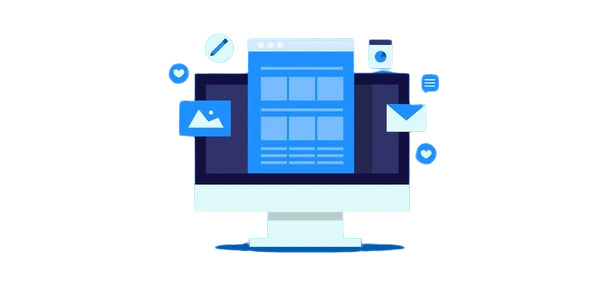Client onboarding is a crucial step in building strong relationships between agencies and their clients. It’s the first impression and sets the tone for their ongoing collaboration. Unfortunately, this process often has its fair share of challenges. Miscommunication, slow procedures, and a lack of resources can leave clients feeling frustrated and even regretting their decision to engage with an agency. To succeed in turning first-time engagements into long-lasting partnerships, agencies need to identify these hurdles and find practical solutions.
Tackling these onboarding pain points is vital for smooth agency operations. Imagine starting a puzzle and finding several pieces missing—it hampers your ability to complete the picture. Similarly, unaddressed challenges in onboarding can disrupt overall workflow and client satisfaction. This introduction will explore common pain points in onboarding and offer straightforward solutions to make the entire process seamless and effective.
Identifying Common Client Onboarding Pain Points
The onboarding process can stumble over several hurdles. These obstacles often stem from three main issues:
– Miscommunication: There are many moving parts in the onboarding process, and clarity can easily get lost in the shuffle. This lack of communication can create misunderstandings, leaving clients anxious about what to expect next.
– Delayed Processes: Nobody likes to wait, especially new clients eager to see progress. Delays in onboarding can result from disorganized methods or unclear processes, leading to client frustration.
– Insufficient Training or Resources: Giving clients access to resources and training is key to helping them feel informed and confident. When they feel left in the dark, it may impact their satisfaction and trust.
Agencies must identify these pain points early and take steps to address them. Imagine walking into a new job and not being told where anything is or who to approach for help—it would be overwhelming. Addressing these onboarding hiccups means creating a welcoming environment where clients feel informed, engaged, and ready to embark on their journey with the agency.
Practical Solutions for Managing Communication Issues
Effective communication is the backbone of a successful onboarding process. To prevent misunderstandings, setting clear expectations from the very beginning is critical. Outline what the clients can expect during the onboarding phase, including timelines, key milestones, and deliverables. This transparency helps to set the stage for a positive experience.
Regular check-ins and updates are another powerful tool for keeping both parties on the same page. Scheduling these touchpoints can minimize confusion and ensure the onboarding process stays on track. Whether through weekly meetings or quick status updates, consistent communication fosters trust and keeps clients informed.
Utilizing collaborative tools can further enhance communication. Platforms that allow for shared access to project details and real-time updates can bridge gaps and improve teamwork. Tools like Trello, Slack, and Asana offer seamless ways to align teams and simplify the communication flow.
Streamlining the Onboarding Process
The onboarding process should be as smooth as a well-oiled machine. Start by creating a clear step-by-step onboarding plan that guides clients through each phase. This plan acts like a road map, providing direction and highlighting key points along the journey.
Automation is another key player in streamlining tasks. By automating repetitive activities, agencies can save time and concentrate on the more complex aspects of onboarding. This includes everything from automated welcome emails to task reminders, all aimed at reducing manual effort and improving efficiency.
To further ease the onboarding process, it’s beneficial to provide clients with easy-to-follow guides and resources. Imagine setting up new equipment without a manual—frustrating, right? Clear guides help clients understand processes better and enable them to navigate new systems confidently.
Enhancing Client Training and Resources
Improving client training is like watering a plant to see it grow. Well-developed training materials form the foundation for clients to learn and adapt to new systems. These materials should be comprehensive yet simple enough for anyone to grasp.
Offering one-on-one support sessions can also greatly improve client onboarding. These personalized interactions allow clients to ask questions and receive tailored guidance, which is incredibly reassuring. It encourages clients to engage more and feel valued in their learning process.
It’s also important to continually gather feedback to improve training resources. This feedback not only identifies areas that need improvement but also shows clients that their input is valued. This proactive approach helps agencies fine-tune their onboarding methods and ensure that they are providing the best support possible.
Summing Up Solutions
Addressing client onboarding challenges doesn’t have to be overwhelming. By focusing on communication, creating streamlined processes, and enhancing training resources, agencies can transform daunting onboarding experiences into smooth transitions. The strategies outlined here are designed to help build a more informed and engaged client base. Through these efforts, agencies position themselves better to build stronger, lasting relationships with their clients.
Agencies looking to refine their approach to onboarding can benefit greatly from targeted resources. Explore how Growthable can enhance your HighLevel onboarding with our tailored courses. Our commitment to delivering top-notch support ensures you stay ahead in offering exceptional client experiences.










